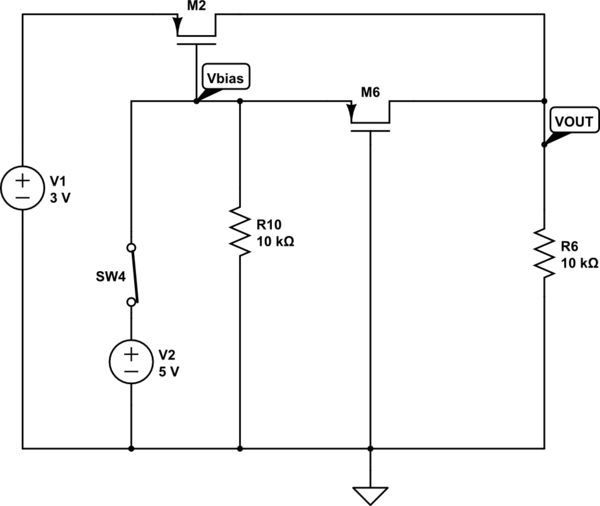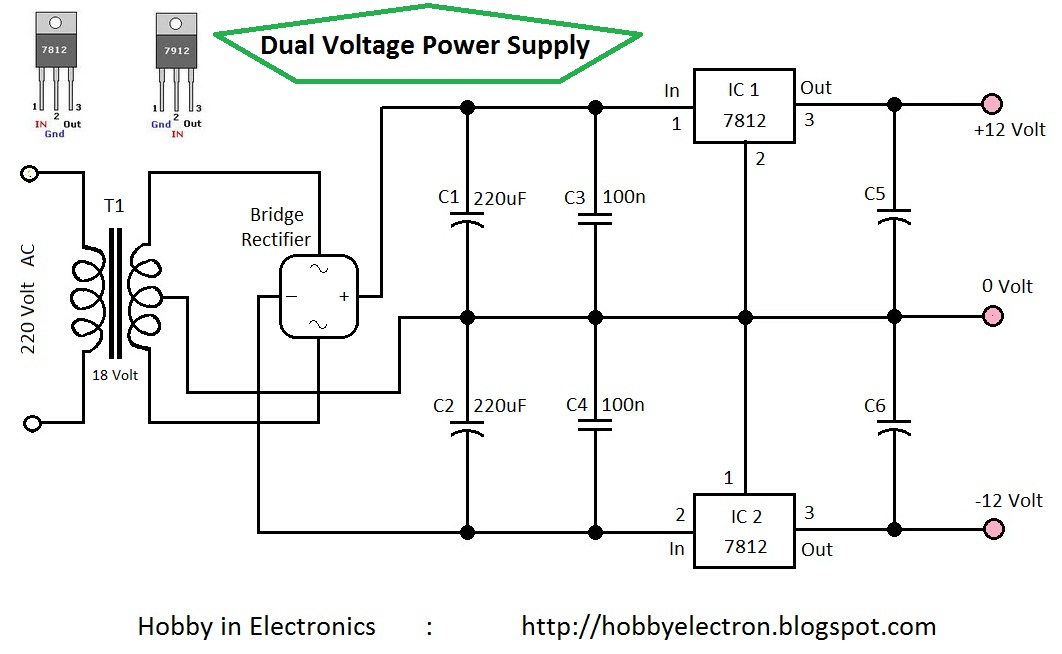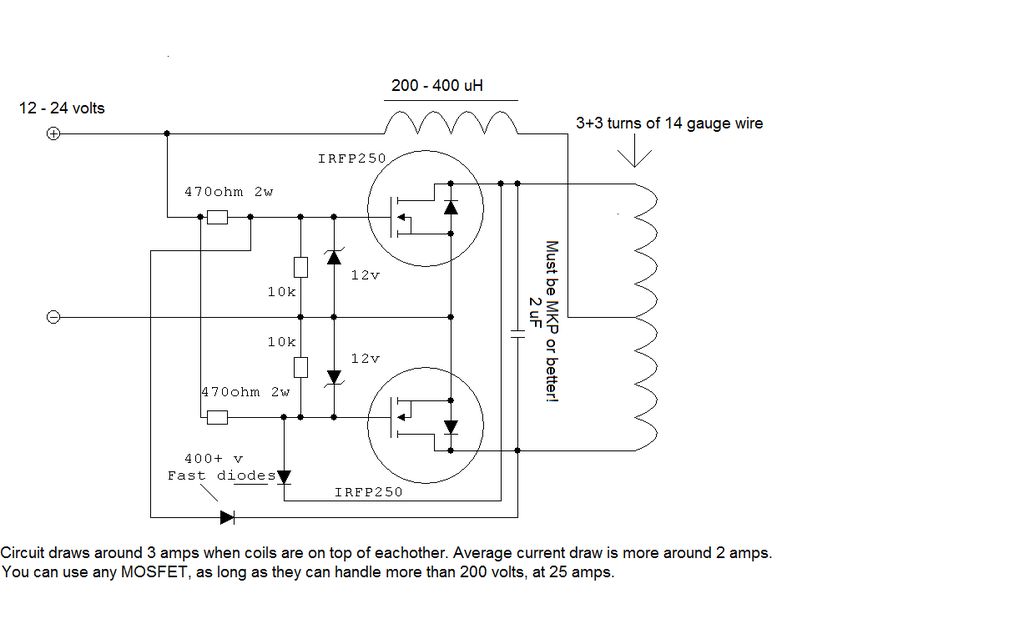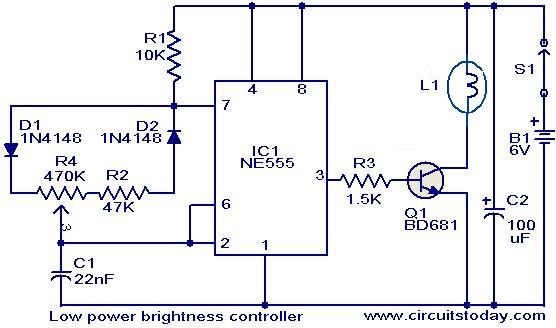
power Switching Between Two Voltage Supplies

The output voltage (VOUT) is intended to be 3V when the switch is open and 5V when the switch is closed. The simulation correctly reflects the desired outcome when the switch is open; however, it does not perform as expected when the switch is closed. There is uncertainty regarding the cause of this issue and whether there is a more effective solution. A common cathode diode pair has been avoided to prevent forward voltage drop. The switch is used solely for simulation purposes to represent the connection and disconnection of 5V power from the circuit, with the intention of not using a mechanical switch ultimately.
In the context of the circuit design, the output voltage behavior can be achieved by employing a combination of transistors and resistors to control the voltage levels effectively. When the switch is open, the circuit should be designed to pull VOUT down to 3V. This could be accomplished using a voltage divider configuration or by ensuring that the output is connected to a reference voltage of 3V through a resistor.
When the switch is closed, the circuit must allow for VOUT to rise to 5V. This could be realized by utilizing a P-channel MOSFET or an N-channel MOSFET, depending on the circuit configuration, where the gate of the MOSFET is controlled by the switch. When the switch is closed, the MOSFET should turn on, allowing the higher voltage (5V) to pass through to VOUT.
A potential issue with the observed voltage of approximately 3.6V when the switch is closed may be attributed to body diode conduction within the MOSFET or other diodes present in the circuit. This effect can cause an undesired voltage drop. To mitigate this, it is advisable to ensure that the MOSFET is properly biased and that any diode paths are accounted for in the design.
Additionally, if avoiding a common cathode diode pair is necessary, consider implementing a different configuration that can provide the required voltage levels without introducing significant forward voltage drops. A well-designed feedback mechanism could also help regulate VOUT to ensure it meets the required specifications under varying load conditions.
In summary, careful consideration of the components and their configurations within the circuit will be essential to achieve the desired voltage outputs of 3V and 5V based on the switch's state.VOUT to be 3V when the switch is open and 5V when the switch is closed. The simulation seems to give me what I want when the switch is open, but not when it`s closed. What am I doing wrong Is there a better way to do this I was avoiding a common cathode diode pair to avoid the forward voltage drop. @Gorloth. the switch exists for the purposes of simulation only. It`s meant to simulate the attaching and detatching of 5V power from the circuit. I don`t want a mechanical switch ultimately. vicatcu Apr 21 `13 at 5:40 YOu say the desired behaviour of 3v or 5v at vout, but you also say when simulated it does not work when the switch is closed, but you specify how it`s not working, if you are getting a vout that is ~3. 6v then sounds liek a body diode issue that Brian mentions in his answer below Gorloth Apr 21 `13 at 19:06
🔗 External reference
In the context of the circuit design, the output voltage behavior can be achieved by employing a combination of transistors and resistors to control the voltage levels effectively. When the switch is open, the circuit should be designed to pull VOUT down to 3V. This could be accomplished using a voltage divider configuration or by ensuring that the output is connected to a reference voltage of 3V through a resistor.
When the switch is closed, the circuit must allow for VOUT to rise to 5V. This could be realized by utilizing a P-channel MOSFET or an N-channel MOSFET, depending on the circuit configuration, where the gate of the MOSFET is controlled by the switch. When the switch is closed, the MOSFET should turn on, allowing the higher voltage (5V) to pass through to VOUT.
A potential issue with the observed voltage of approximately 3.6V when the switch is closed may be attributed to body diode conduction within the MOSFET or other diodes present in the circuit. This effect can cause an undesired voltage drop. To mitigate this, it is advisable to ensure that the MOSFET is properly biased and that any diode paths are accounted for in the design.
Additionally, if avoiding a common cathode diode pair is necessary, consider implementing a different configuration that can provide the required voltage levels without introducing significant forward voltage drops. A well-designed feedback mechanism could also help regulate VOUT to ensure it meets the required specifications under varying load conditions.
In summary, careful consideration of the components and their configurations within the circuit will be essential to achieve the desired voltage outputs of 3V and 5V based on the switch's state.VOUT to be 3V when the switch is open and 5V when the switch is closed. The simulation seems to give me what I want when the switch is open, but not when it`s closed. What am I doing wrong Is there a better way to do this I was avoiding a common cathode diode pair to avoid the forward voltage drop. @Gorloth. the switch exists for the purposes of simulation only. It`s meant to simulate the attaching and detatching of 5V power from the circuit. I don`t want a mechanical switch ultimately. vicatcu Apr 21 `13 at 5:40 YOu say the desired behaviour of 3v or 5v at vout, but you also say when simulated it does not work when the switch is closed, but you specify how it`s not working, if you are getting a vout that is ~3. 6v then sounds liek a body diode issue that Brian mentions in his answer below Gorloth Apr 21 `13 at 19:06
🔗 External reference


%2BCircuit%2Bdiagram%2Busing%2BCD4047%2Band%2BIRFZ44%2Bpower%2BMOSFET.png)


